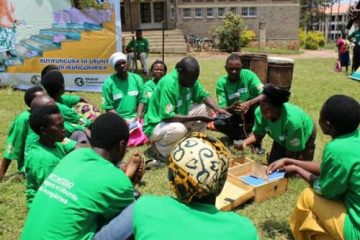The symbolic monument at the former Winteko sector, now part of Rusizi District, commemorates the atrocities of the 1994 Genocide against the Tutsi and highlights the role of Theodore Rukeratabaro, commonly known as Tabaro, from the family of Abakurankota. The monument serves as a stark reminder of the events that unfolded at Winteko.
According to Jean Damascene Gasarabwe, a 62-year-old genocide survivor from Winteko, the monument bears the names of 171 victims from the families of Abahire, Abasate, and Abakongezi. These individuals were massacred by militias from Abakurankota, led by Tabaro himself. Gasarabwe explains that the monument was erected at this specific location for historical reasons, to honor their lost families and ensure that future generations never forget what happened.
Mapping Winteko During the Genocide
Gasarabwe recounts that during the genocide, the site of the monument was once a roadblock where militias intercepted Tutsi fleeing from Nyakanyinya and Nyakarenzo. These individuals were attempting to reach the former Kamarampaka Stadium but were instead taken to the brigade, where Tabaro had established his headquarters and a larger roadblock. There, decisions were made to either kill the victims or send them to Burende.
“Burende” referred to two nearby houses where Tutsi women were held after their husbands and male relatives were killed. Every night, the women were subjected to rape after a day of mass killings. Gasarabwe notes that Burende was located approximately 200 meters from the roadblock and 500 meters from the brigade, positioned between the two.
The Myth of the ‘Abakurankota’
Gasarabwe explains that the Abakurankota were a large family, with the house of Mfizi—Tabaro’s ancestor—at its center. Before the genocide, the Abakurankota from Mfizi’s house considered themselves the only true Hutu and excluded others. They even formed the UBEMFI movement (Ubumwe bwa Bene Mfizi), meaning “the union of Mfizi’s family.”
During the genocide, the Abakurankota from Mfizi’s house became militias responsible for killing many Tutsi in Winteko. Meanwhile, Abakurankota from other houses were targeted and killed as Tutsi wherever they were found.
Tabaro’s Fate
The infamous Tabaro, who orchestrated numerous killings in Winteko and surrounding areas, was sentenced to life imprisonment by the Stockholm Svea Court of Appeal in Sweden. His trial began on November 9, 2018, concluded on March 30, 2019, and the judgment was pronounced on April 29, 2019.
Although this sentence cannot bring back their loved ones, genocide survivors from the former Winteko sector express gratitude that justice was served.








